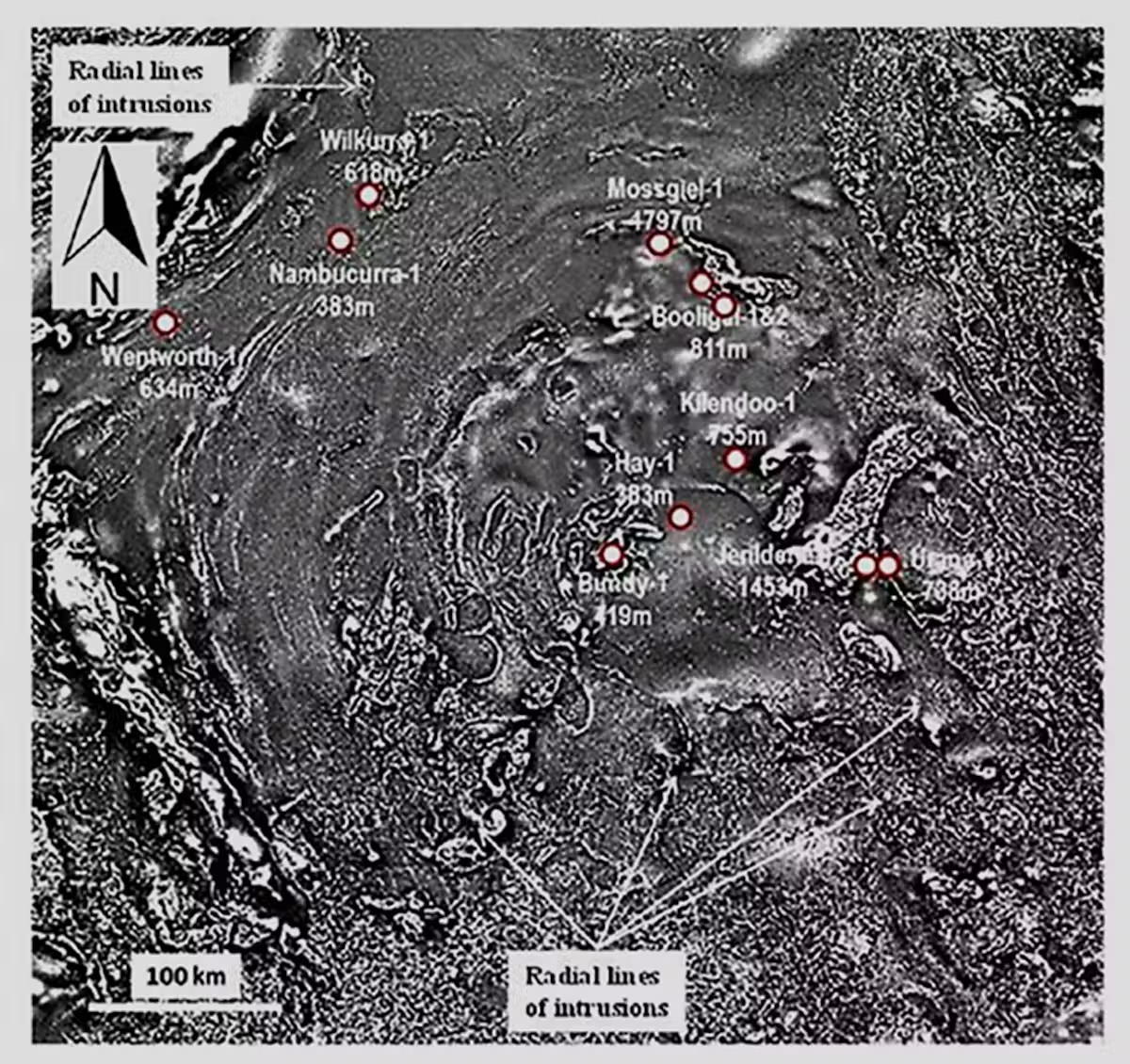Asteroid impacts have arguably killed off more species than almost any other type of disaster since life began on Earth. The most famous of these, the Chicxulub impactor, killed the dinosaurs about 65 million years ago, along with 76% of all species on the planet at the time. But that was by no means the worst disaster; as far as we can tell, it wasn’t even the biggest asteroid. That title currently goes to the Vredefort crater in South Africa. Coming in at over 300 kilometers wide, it was the largest asteroid crater so far found, at least when it was formed about 2 billion years ago. But that might be about to change if a theory from Andrew Glikson and Tony Yeates of New South Wales is correct. They have found what they believe to be the biggest impact crater on Earth since the Late Heavy Bombardment in their own Australian province of New South Wales, and they think it might have caused one of the other five mass extinction events.
They named the crater, which they estimate is around 520 kilometers in size, the Deniliquin structure. Trying to research a structure that massive is a difficult task, and made much more difficult the older the structure is. Drs. Glikson and Yeates estimate the Denliquin structure to be around 445 million years ago. That is a lot of time for erosion, sedimentation, and tectonic activity to take its toll on any structure on Earth, no matter how massive. However, there are some tell-tale clues that researchers can find to point out the size of this impact crater.
First is an assessment of the geophysical data of the region. Updates of that data, which culminated in 2020, point to a structure with a defined dome from a seismic event that is around 520 km wide. Other magnetic evidence abounds, such as “radial faults” that point away from what is thought to be the center of the impact structure. And there are some magnetic irregularities that could have been caused by magma swirling around closer to the surface after the impact.
Credit – GeologyHub YouTube Channel
If it does exist, it would have been created by an impact of epic proportions. The authors of a new paper on the crater suggest a specific time in history. Four hundred forty-five million years ago coincided with the geologic event called the Hirnantian glaciation stage, which was part of the first of the five big extinctions – the End Ordovician extinction.
The end of the Ordovician period was caused by massive global cooling, which caused massive changes in ocean chemistry and other problems. A full 86% of all species on Earth died off during this period, as it was the second-most catastrophic of all the extinction events (after the one that ended the Permian 250 million years ago).
Lots of geological processes can cause global cooling, but one of the more dramatic ones is an asteroid impact, which flings ejects into the upper atmosphere to block out the Sun. An impact as big as the one that created the Denliquin structure was undoubtedly big enough to do just that.
Credit – GeologyHub YouTube Channel
So, could this massive crater be a clue to how a different asteroid caused another global catastrophe? Maybe, but to get a better timestamp on when the impact happened, researchers will need to collect samples from deep within the magnetic core of the impact crater. Currently, there aren’t any plans to do so, but there if the theory garners enough attention, there will undoubtedly be some multi-millionaire who would be willing to fund an effort to try to research the world’s largest impact crater – and discover if it was responsible for one of the deadliest events in Earth’s history.
Learn More:
The Conversation – New evidence suggests the world’s largest known asteroid impact structure is buried deep in southeast Australia
Glikson & Yeates – Geophysics and origin of the Deniliquin multiple-ring feature, Southeast Australia
UT – Scientists Have Been Underestimating the Asteroid That Created the Biggest Known Crater on Earth
UT – Recreating the Extreme Forces of an Asteroid Impact in the Lab
Lead Image:
Satellite image of the impact structure, with a noticeable multi-ring pattern and points denoting shallow drill holes where samples were taken.
Credit – Glikson and Yeates

